Roselle for hypertension in adults
- PMID: 34837382
- PMCID: PMC8626866
- DOI: 10.1002/14651858.CD007894.pub3
Roselle for hypertension in adults
Abstract
Background: Hypertension is considered to be a serious health problem worldwide. Controlling and lowering blood pressure are of significant benefit to people with hypertension because hypertension is a risk factor for stroke, heart disease, and cardiovascular disease. Roselle, the tropical plant Hibiscus sabdariffa, also commonly called sour tea or red tea, has been used as both a thirst-quenching drink and for medicinal purposes.
Objectives: To assess the effect of Roselle on blood pressure in people with primary hypertension.
Search methods: For this update, the Cochrane Hypertension Information Specialist searched the following databases and trials registers for randomised controlled trials (RCTs): the Cochrane Hypertension Specialised Register (to 6 August 2021), Cochrane Central Register of Controlled Trials (CENTRAL; 2021, Issue 7), MEDLINE Ovid (1946 to 5 August 2021), Embase Ovid (1974 to 5 August 2021), ProQuest Dissertations & Theses (to 6 August 2021), Web of Science Clarivate (to 7 August 2021), Food Science and Technology Abstracts Clarivate (to 7 August 2021), the WHO International Clinical Trials Registry Platform (to 6 August 2021), and the US National Institutes of Health Ongoing Trials Register ClinicalTrials.gov (to 6 August 2021). We searched Google Scholar and OpenSIGLE. We also handsearched local and regional Chinese databases: CBM, CMCC, TCMLARS, CNKI, CMAC, and the Index to Chinese Periodical Literature (to 14 September 2020), as well as Thai databases (ThaiJO, CUIR, TDC, CMU e-Theses, TCTR) (to 3 October 2020). There were no language or publication date restrictions.
Selection criteria: We sought RCTs evaluating the use of any forms of Roselle with placebo or no treatment in adults with hypertension. Our primary outcome was change in trough and/or peak systolic and diastolic blood pressure (SBP, DBP). Secondary outcomes were withdrawals due to adverse effects, change in pulse pressure, and change in heart rate.
Data collection and analysis: All search results were managed using Covidence and re-checked for the number of records, inclusion and exclusion of studies with Mendeley reference management software. We used standard methodological procedures expected by Cochrane. Two review authors worked independently in parallel for screening (titles and abstracts, and full reports), data extraction, risk of bias assessment, and assessment of the certainty of the evidence using the GRADE approach. Any disagreements were resolved by discussion or by consultation with the third review author if necessary. We presented mean difference (MD) of change in SBP and DBP with their corresponding 95% confidence interval (CI).
Main results: For this update, only one RCT with a parallel-group design involving 60 participants with type 2 diabetes mellitus fulfilled the inclusion criteria. This study investigated the effect of Roselle extract capsules (total dose of 5600 mg) compared with placebo (lactose) at eight weeks. The study was at low risk of selection bias, performance bias, and detection bias. Conversely, it was at high risk of attrition bias, reporting bias, and other bias (baseline imbalance). We have very little confidence in the effect estimate of Roselle on change-from-baseline in both SBP and DBP between the two groups. The MD of change in SBP was 1.65, 95% CI -7.89 to 11.19 mmHg, 52 participants, very low-certainty evidence. The MD of change in DBP was 4.60, 95% CI -1.38 to 10.58 mmHg, 52 participants, very low-certainty evidence. Our secondary outcomes of withdrawals due to adverse effects, change in pulse pressure, and change in heart rate were not reported. Due to the limited available data, no secondary analyses were performed (subgroup and sensitivity analysis).
Authors' conclusions: The evidence is currently insufficient to determine the effectiveness of Roselle compared to placebo for controlling or lowering blood pressure in people with hypertension. The certainty of evidence was very low due to methodological limitations, imprecision, and indirectness. There is a need for rigorous RCTs that address the review question.
Trial registration: ClinicalTrials.gov NCT04339283.
Copyright © 2021 The Cochrane Collaboration. Published by John Wiley & Sons, Ltd.
Conflict of interest statement
P Pattanittum: none known.
C Ngamjarus: none known.
F Buttramee: none known.
C Somboonporn: none known.
Figures
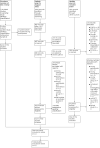
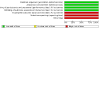
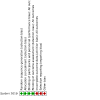

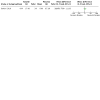
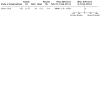
Update of
-
Roselle for hypertension in adults.Cochrane Database Syst Rev. 2010 Jan 20;2010(1):CD007894. doi: 10.1002/14651858.CD007894.pub2. Cochrane Database Syst Rev. 2010. Update in: Cochrane Database Syst Rev. 2021 Nov 27;11:CD007894. doi: 10.1002/14651858.CD007894.pub3. PMID: 20091658 Free PMC article. Updated.
Similar articles
-
Replacing salt with low-sodium salt substitutes (LSSS) for cardiovascular health in adults, children and pregnant women.Cochrane Database Syst Rev. 2022 Aug 10;8(8):CD015207. doi: 10.1002/14651858.CD015207. Cochrane Database Syst Rev. 2022. PMID: 35944931 Free PMC article.
-
Topical clonidine for neuropathic pain in adults.Cochrane Database Syst Rev. 2022 May 19;5(5):CD010967. doi: 10.1002/14651858.CD010967.pub3. Cochrane Database Syst Rev. 2022. PMID: 35587172 Free PMC article.
-
Silicone gel sheeting for treating hypertrophic scars.Cochrane Database Syst Rev. 2021 Sep 26;9(9):CD013357. doi: 10.1002/14651858.CD013357.pub2. Cochrane Database Syst Rev. 2021. PMID: 34564840 Free PMC article.
-
Treatments for seizures in catamenial (menstrual-related) epilepsy.Cochrane Database Syst Rev. 2021 Sep 16;9(9):CD013225. doi: 10.1002/14651858.CD013225.pub3. Cochrane Database Syst Rev. 2021. PMID: 34528245 Free PMC article.
-
Non-invasive positive airway pressure therapy for improving erectile dysfunction in men with obstructive sleep apnoea.Cochrane Database Syst Rev. 2021 Sep 23;9(9):CD013169. doi: 10.1002/14651858.CD013169.pub2. Cochrane Database Syst Rev. 2021. PMID: 34555186 Free PMC article.
Cited by
-
Serum γ-glutamyltransferase levels and obesity status changes the risk of prehypertension in Chinese adults.Prev Med Rep. 2024 Jun 10;43:102792. doi: 10.1016/j.pmedr.2024.102792. eCollection 2024 Jul. Prev Med Rep. 2024. PMID: 38975280 Free PMC article.
-
Effect of tea consumption on the development of hypertension, diabetes, and obesity: a bidirectional two-sample Mendelian randomization analysis.Front Nutr. 2024 Oct 31;11:1428445. doi: 10.3389/fnut.2024.1428445. eCollection 2024. Front Nutr. 2024. PMID: 39545047 Free PMC article.
-
Novel Insights into Anthocyanin Synthesis in the Calyx of Roselle Using Integrated Transcriptomic and Metabolomic Analyses.Int J Mol Sci. 2022 Nov 11;23(22):13908. doi: 10.3390/ijms232213908. Int J Mol Sci. 2022. PMID: 36430383 Free PMC article.
-
Roselle for hypertension in adults.Cochrane Database Syst Rev. 2010 Jan 20;2010(1):CD007894. doi: 10.1002/14651858.CD007894.pub2. Cochrane Database Syst Rev. 2010. Update in: Cochrane Database Syst Rev. 2021 Nov 27;11:CD007894. doi: 10.1002/14651858.CD007894.pub3. PMID: 20091658 Free PMC article. Updated.
-
Effect of the Combination of Hibiscus sabdariffa in Combination with Other Plant Extracts in the Prevention of Metabolic Syndrome: A Systematic Review and Meta-Analysis.Foods. 2023 Jun 5;12(11):2269. doi: 10.3390/foods12112269. Foods. 2023. PMID: 37297513 Free PMC article. Review.
References
References to studies included in this review
Sarbini 2019 {published data only}
-
- Sarbini DWI, Huriyati EMY, Sadewa H, Wahyuningsih MSH. The effect of rosella (Hibiscus sabdariffa linn) on insulin resistance in patients with type 2 diabetes mellitus: a randomized clinical trial. International Journal of Pharmaceutical Research 2019;11:547-57.
References to studies excluded from this review
Abubakar 2019 {published data only}
Aroonsiriwatana 2010 {published data only}
-
- Aroonsiriwatana S. The Effects of Roselle (Hibiscus Sabdariffa) and Stevia (Stevia Rebaudiana) on Hypertension in Patients with Type 2 Diabetes at King Chulalongkorn Memorial Hospital [Masters thesis]. Bangkok (TH): Chulalongkorn University, 2010.
Asgary 2016 {published data only}
-
- Asgary S, Soltani R, Zolghadr M, Keshvari M, Sarrafzadegan N. Evaluation of the effects of roselle (Hibiscus sabdariffa L.) on oxidative stress and serum levels of lipids, insulin and hs-CRP in adult patients with metabolic syndrome: a double-blind placebo-controlled clinical trial. Journal of Complementary & Integrative Medicine 2016;13(2):175-80. - PubMed
Boix‐Castejon 2017 {published data only}
-
- Boix-Castejon M, Herranz-Lopez M, Caturla N, Roche E, Barrajon-Catalan E, Micol V. Hibiscus and lemon verbena polyphenols: assessment for weight management in overweight volunteers. Appetite control and satiety. Free Radical Biology and Medicine 2017;108(Suppl 1):S96.
Boix‐Castejon 2018 {published data only}
-
- Boix-Castejon M, Herranz-Lopez M, Perez Gago A, Olivares-Vicente M, Caturla N, Roche E, et al. Hibiscus and lemon verbena polyphenols modulate appetite-related biomarkers in overweight subjects: a randomized controlled trial. Food & Function 2018;9(6):3173-84. - PubMed
Boix‐Castejon 2021 {published data only}
-
- Boix-Castejon M, Herranz-Lopez M, Olivares-Vicente M, Campoy P, Caturla N, Jones J, et al. Effect of metabolaid (R) on pre- and stage 1 hypertensive patients: a randomized controlled trial. Journal of Functional Foods 2021;84:1-8.
Bourqui 2020 {published data only}
-
- Bourqui A, Niang EAB, Graz B, Diop EA, Dahaba M, Thiaw I, et al. Hypertension treatment with Combretum micranthum or Hibiscus sabdariffa, as decoction or tablet: a randomized clinical trial. Journal of Human Hypertension 2020;34:1-9. - PubMed
Bunbupha 2018 {published data only}
-
- Bunbupha S, Prachaney P, Berkban T, Kukongviriyapan U, Pakdeechote P. Hibiscus sabdariffa L. extract alleviates vascular endothelial dysfunction by enhancing nitric oxide bioavailability in high-fructose diet induced insulin resistance rats. Srinagarind Medical Journal 2018;33(4):294-300.
Elkafrawy 2020 {published data only}
-
- Elkafrawy N, Younes K, Naguib A, Badr H, Kamal Zewain S, Kamel M, et al. Antihypertensive efficacy and safety of a standardized herbal medicinal product of Hibiscus sabdariffa and Olea europaea extracts (NW Roselle): a phase-II, randomized, double-blind, captopril-controlled clinical trial. Phytotherapy Research: PTR 2020;34(12):3379-87. - PubMed
Hadi 2017 {published data only}
-
- Hadi A, Pourmasoumi M, Kafeshani M, Karimian J, Maracy MR, Entezari MH. The effect of green tea and sour tea (Hibiscus sabdariffa L.) supplementation on oxidative stress and muscle damage in athletes. Journal of Dietary Supplements 2017;14(3):346-57. - PubMed
Hajifaraji 2018 {published data only}
-
- Hajifaraji M, Matlabi M, Ahmadzadeh-Sani F, Mehrabi Y, Rezaee MS, Hajimehdipour H, et al. Effects of aqueous extracts of dried calyx of sour tea (Hibiscus sabdariffa L.) on polygenic dyslipidemia: a randomized clinical trial. Avicenna Journal of Phytomedicine 2018;8(1):24-32. [PMID: ] - PMC - PubMed
Herranz‐Lopez 2019 {published data only}
Intarit 2012 {published data only}
-
- Intarit P, Kuman Pava K, Itharat A, Chinsoi P. Comparative study on the efficacy and side effects of hibiscus sabdariffa linn. extract versus simvastatin in reducing blood lipids levels on hyperlipidemias patient (clinical trial phase II). Thammasat Medical Journal 2012;12(3):506-17.
IRCT201310089662N8 {published data only}
-
- IRCT201310089662N8. Evaluation of the effects of sour tea on lipid profile, insulin resistance, oxidative stress, and inflammatory markers in adult patients with metabolic syndrome. www.who.int/trialsearch/Trial2.aspx?TrialID=IRCT201310089662N8 (first received 4 December 2013).
IRCT2014041510826N8 {published data only}
-
- IRCT2014041510826N8. Effect of Hibiscus subdariffa on albuminuria, total antioxidant capacity, hypertension and hs-CRP in patient with diabetic nephropathy. www.who.int/trialsearch/Trial2.aspx?TrialID=IRCT2014041510826N8 (first received 4 December 2013).
Jalalyazdi 2019 {published data only}
Kafeshani 2017 {published data only}
Marhuenda 2021 {published data only}
-
- Marhuenda J, Pérez-Piñero S, Arcusa R, Victoria-Montesinos D, Cánovas F, Sánchez-Macarro M, et al. A randomized, double-blind, placebo-controlled trial to determine the effectiveness of a polyphenolic extract (Hibiscus sabdariffa and Lippia citriodora) for reducing blood pressure in prehypertensive and type 1 hypertensive subjects. Molecules (Basel, Switzerland) 2021;26(6):1-12. [PMID: ] - PMC - PubMed
McKay 2008 {published data only}
-
- McKay DL, Saltzman E, Chen CY, Blumberg J. Hibiscus sabdariffa l. tea (tisane) lowers blood pressure In prehypertensive and mildly hypertensive adults. Circulation 2008;118(18):S1123. [0009-7322] - PubMed
McKay 2010 {published data only}
-
- McKay DL, Chen CY, Saltzman E, Blumberg JB. Hibiscus sabdariffa L. tea (tisane) lowers blood pressure in prehypertensive and mildly hypertensive adults. Journal of Nutrition 2010;140(2):298-303. [PMID: ] - PubMed
Najarzade 2016 {published data only}
-
- Najarzade A, Hemayati R, Reza JZ, Fallahzade H, Mozaffari-Khosravi H, Taghizadeh M, et al. Effects of hibiscus subdariffa on albuminuria and hypertension in patients with diabetic nephropathy. Toloo-e-behdasht 2016;14(6):Pe107-18.
NCT01682291 {published data only}
-
- NCT01682291. Prehypertension and dietary supplements - The PYRAMIDS study [Pre-hypertension treatment with a combination of dietary supplements and life-style modifications]. clinicaltrials.gov/show/NCT01682291 (first received 10 September 2012).
NCT02637570 {published data only}
-
- NCT02637570. Effect of hibiscus tea and green tea supplements on athletic performance, blood pressure, muscle damage indices and oxidative stress. clinicaltrials.gov/show/NCT02637570 (first received 22 December 2015).
NCT03507023 {published data only}
-
- NCT03507023. Effect of hibiscus and lippia extract on blood pressure [Effect of the combination of polyphenols derived from the hibiscus sabdariffa and lippia citriodora on slightly hypertensive or type 1 hypertensive volunteers]. clinicaltrials.gov/show/NCT03507023 (first received 24 April 2018).
NCT03804801 {published data only}
-
- NCT03804801. Effect of hibiscus sabdariffa on blood pressure in a university population [Effect of hibiscus sabdariffa on blood pressure in a university population]. clinicaltrials.gov/show/NCT03804801 (first received 15 January 2019).
Nwachukwu 2015 {published data only}
-
- Nwachukwu DC, Aneke EI, Obika LF, Nwachukwu NZ. Effects of aqueous extract of Hibiscus sabdariffa on the renin-angiotensin-aldosterone system of Nigerians with mild to moderate essential hypertension: a comparative study with lisinopril. Indian Journal of Pharmacology 2015;47(5):540-5. - PMC - PubMed
Nwachukwu 2015a {published data only}
-
- Nwachukwu DC, Aneke E, Nwachukwu NZ, Obika LF, Nwagha UI, Eze AA. Effect of Hibiscus sabdariffa on blood pressure and electrolyte profile of mild to moderate hypertensive Nigerians: a comparative study with hydrochlorothiazide. Nigerian Journal of Clinical Practice 2015;18(6):762-70. - PubMed
Nwachukwu 2016 {published data only}
-
- Nwachukwu DC, Aneke EI, Nwachukwu NZ, Azubike N, Obika LFO. Thirst perception in mild to moderate hypertensive Nigerians treated with aqueous extract of hibiscus sabdariffa l. African Journal of Pharmacy and Pharmacology 2016;10(18):403-10.
Nwachukwu 2017 {published data only}
Pelliccia 2017 {published data only}
-
- Pelliccia F, Pasceri V, Marazzi G, Arrivi A, Cacciotti L, Pannarale G, et al. Randomised, double-blind, placebo-controlled, assessment of the efficacy and safety of dietary supplements in prehypertension. Journal of Human Hypertension 2017;31(10):647-53. [PMID: ] - PubMed
Salman 2017 {published data only}
-
- Salman A, Abdullah I, Saib I, Abdulaziz B, Yahya K, Awad M, et al. Acute effect of drinking cold hibiscus beverage on blood pressure in adult females: a randomized controlled trial. International Journal of Academic Scientific Research 2017;5(1):26-34.
Tangkomsaengtong 2020 {published data only}
-
- Tangkomsaengtong C, Arunakul I-O, Itharat A. Preliminary study on effect and safety of roselle extract tablets for treating patient with stage 1 hypertension. Thai Journal of Pharmacy Practice 2020;12(3):913-22.
Thanasatirakul 2015 {published data only}
-
- Thanasatirakul P. The effects of roselle flower tea (hibiscus sabdariffa extract) on home blood pressure in patients with mild hypertension: a randomized double blinded placebo controlled trial [Masters thesis]. Bangkok (TH): Chulalongkorn University, 2015.
Wiruttanapornkul 2012 {published data only}
-
- Wiruttanapornkul K. The effect of roselle and stevia on global cardiovascular risk factor in type 2 diabetes mellitus and hypertensive patients at King Chulalongkorn Memorial Hospital. Master of Science Program in Medicine (Master's thesis) 2012.
Xu 2021 {published data only}
-
- Xu Z, Xie J, Zhang H, Pang J, Li Q, Wang X, et al. Anthocyanin supplementation at different doses improves cholesterol efflux capacity in subjects with dyslipidemia - a randomized controlled trial. European Journal of Clinical Nutrition 2021;75(2):345-54. [PMID: ] - PubMed
References to studies awaiting assessment
Al‐Anbaki 2021 {published data only}
Izadi 2021 {published data only}
-
- Izadi F, Farrokhzad A, Tamizifar B, Tarrahi MJ, Entezari MH. Effect of sour tea supplementation on liver enzymes, lipid profile, blood pressure, and antioxidant status in patients with non-alcoholic fatty liver disease: a double-blind randomized controlled clinical trial. Phytotherapy Research: PTR 2021;35(1):477-85. [PMID: ] - PubMed
NCT04339283 {published data only}
-
- NCT04339283. Effect of standardized hibiscus sabdariffa tea in seemingly healthy human volunteers [Standardized hibiscus sabdariffa linn tea, potential nutraceutical candidate for the prevention of hypertension, diabetes, and hypercholesterolemia - a pilot study]. clinicaltrials.gov/show/NCT04339283 (first received 9 April 2020).
Additional references
Abegaz 2017
Adeola 2019
-
- Adeola O, De Souza Batista CM, Fungwe TV. The effectiveness of hibiscus sabdariffa for improving metabolic syndrome: a systematic review. EC Nutrition 2019;10:887-92.
Ali 2005
Amin 2020
-
- Amin AR, Kassab RB, Moneim AEA, Amin HK. Comparison among garlic, berberine, resveratrol, hibiscus sabdariffa, genus zizyphus, hesperidin, red beetroot, catha edulis, portulaca oleracea, and mulberry leaves in the treatment of hypertension and type 2 DM: a comprehensive review. Natural Product Communications 2020;15(4):1-24.
Chen 2018
-
- Chen YJ, Li LJ, Tang WL, Song JY, Qiu R, Li Q, et al. First-line drugs inhibiting the renin angiotensin system versus other first-line antihypertensive drug classes for hypertension. Cochrane Database of Systematic Reviews 2018, Issue 11. Art. No: CD008170. [DOI: 10.1002/14651858.CD008170.pub3] [PMID: ] - DOI - PMC - PubMed
Covidence [Computer program]
-
- Covidence. Version accessed 8 October 2021. Melbourne, Australia: Veritas Health Innovation, August 2021. Available at covidence.org.
Da‐Costa‐Rocha 2014
Ernst 2005
Garjon 2020
GBD 2018
-
- GBD 2017 Risk Factor Collaborators. Global, regional, and national comparative risk assessment of 84 behavioural, environmental and occupational, and metabolic risks or clusters of risks for 195 countries and territories, 1990-2017: a systematic analysis for the Global Burden of Disease Study 2017. Lancet 2018;392(10159):1923-94. - PMC - PubMed
GRADEpro GDT [Computer program]
-
- GRADEpro GDT. Version accessed 15 October 2020. Hamilton (ON): McMaster University (developed by Evidence Prime), May 2018. Available at gradepro.org.
Haji 1999
-
- Haji Faraji M, Haji Tarkhani A. The effect of sour tea (Hibiscus sabdariffa) on essential hypertension. Journal of Ethnopharmacology 1999;65(3):231-6. [PMID: ] - PubMed
Herrera‐Arellano 2004
-
- Herrera-Arellano A, Flores-Romero S, Chavez-Soto MA, Tortoriello J. Effectiveness and tolerability of a standardized extract from hibiscus sabdariffa in patients with mild to moderate hypertension: a controlled and randomized clinical trial. Phytomedicine 2004;11(5):375-82. [0944-7113] - PubMed
Herrera‐Arellano 2007
-
- Herrera-Arellano A, Miranda-Sanchez J, Avila-Castro P, Herrera-Alvarez S, Jiminez-Ferrer JE, Zamilpa A, et al. Clinical effects produced by a standardized herbal medicinal product of Hibiscus sabdariffa on patients with hypertension. A randomized, double-blind, lisinopril-controlled clinical trial. Planta Medica 2007;73(1):6-12. [PMID: ] - PubMed
Higgins 2011
-
- Higgins JPT, Altman DG. Chapter 8: Assessing risk of bias in included studies. In: Higgins JPT, Green S, editor(s). Cochrane Handbook for Systematic Reviews of Interventions Version 5.1.0 (updated March 2011). The Cochrane Collaboration, 2011. Available from training.cochrane.org/handbook/archive/v5.1/.
Higgins 2021a
-
- Higgins JPT, Li T, Deeks JJ. Chapter 6: Choosing effect measures and computing estimates of effect. In: Higgins JPT, Thomas J, Chandler J, Cumpston M, Li T, Page MJ, Welch VA, editor(s). Cochrane Handbook for Systematic Reviews of Interventions Version 6.2 (updated February 2021). Cochrane, 2021. Available from training.cochrane.org/handbook.
Higgins 2021b
-
- Higgins JPT, Eldridge S, Li T. Chapter 23: Including variants on randomized trials. In: Higgins JPT, Thomas J, Chandler J, Cumpston M, Li T, Page MJ, Welch VA, editor(s). Cochrane Handbook for Systematic Reviews of Interventions Version 6.2 (updated February 2021). Cochrane, 2021. Available from training.cochrane.org/handbook.
Hopkins 2013
Igwe 2019
-
- Igwe EO, Charlton KE, Probst YC. Usual dietary anthocyanin intake, sources and their association with blood pressure in a representative sample of Australian adults. Journal of Human Nutrition and Dietetics: The Official Journal of the British Dietetic Association 2019;32(5):578-90. [PMID: ] - PubMed
Jabeur 2017
-
- Jabeur I, Pereira E, Barros L, Calhelha RC, Sokovic M, Oliveira MBPP, et al. Hibiscus sabdariffa L. as a source of nutrients, bioactive compounds and colouring agents. Food Research International (Ottawa, Ont.) 2017;100(Pt 1):717-23. [PMID: ] - PubMed
Laurent 2017
-
- Laurent S. Antihypertensive drugs. Pharmacological Research 2017;124:116-25. [PMID: ] - PubMed
Li 2021
-
- Li TJ, Higgins JPT, Deeks JJ. Chapter 5: Collecting data. In: Higgins JP, Thomas J, Chandler J, Cumpston M, Li T, Page MJ, Welch VA, editor(s). Cochrane Handbook for Systematic Reviews of Interventions Version 6.2 (updated February 2021). Cochrane, 2021. Available from training.cochrane.org/handbook.
Mendeley Desktop [Computer program]
-
- Mendeley Desktop. Version 1.19.8. Glyph & Cog, LLC, 2020.
Mojiminiyi 2007
-
- Mojiminiyi FBO, Dikko M, Muhammad BY, Ojobor PD, Ajagbonna OP, Okolo RU, et al. Antihypertensive effect of an aqueous extract of the calyx of Hibiscus Sabdariffa. Fitoterapia 2007;78(4):292-7. [0367-326X] - PubMed
Mozaffari‐Khosravi 2009
-
- Mozaffari-Khosravi H, Jalali-Khanabadi B-A, Afkhami-Ardekani M, Fatehi F, Noori-Shadkam M. The effects of sour tea (Hibiscus sabdariffa) on hypertension in patients with type II diabetes. Journal of Human Hypertension 2009;23(1):48-54. [PMID: ] - PubMed
Najafpour 2020
-
- Najafpour Boushehri S, Karimbeiki R, Ghasempour S, Ghalishourani SS, Pourmasoumi M, Hadi A, et al. The efficacy of sour tea (Hibiscus sabdariffa L.) on selected cardiovascular disease risk factors: a systematic review and meta-analysis of randomized clinical trials. Phytotherapy Research: PTR 2020;34(2):329-39. [PMID: ] - PubMed
NCD‐RisC 2017
Ngamjarus 2009
Ngamjarus 2010
NICE 2019
-
- National Institute for Health and Care Excellence. Hypertension in Adults: Diagnosis and Management. NICE Guideline (NG136). London (UK): National Institute for Health and Care Excellence, 2019.
Nielsen 2017
-
- Nielsen JA, Shrestha AD, Neupane D, Kallestrup P. Non-adherence to anti-hypertensive medication in low- and middle-income countries: a systematic review and meta-analysis of 92443 subjects. Journal of Human Hypertension 2017;31(1):14-21. [PMID: ] - PubMed
Nirmal 2015
-
- Nirmal NP, Rajput MS, Prasad RG, Ahmad M. Brazilin from Caesalpinia sappan heartwood and its pharmacological activities: a review. Asian Pacific Journal of Tropical Medicine 2015;8(6):421-30. [PMID: ] - PubMed
Odigie 2003
-
- Odigie IP, Ettarh RR, Adigun SA. Chronic administration of aqueous extract of Hibiscus Sabdariffa attenuates hypertension and reverses cardiac hypertrophy in 2K-1C hypertensive rats. Journal of Ethnopharmacology 2003;86(2-3):181-5. [0378-8741] - PubMed
Onyenekwe 1999
-
- Onyenekwe PC, Ajani EO, Ameh DA, Gamaniel KS. Antihypertensive effect of roselle (hibiscus sabdariffa) calyx infusion in spontaneously hypertensive rats and a comparison of its toxicity with that in wistar rats. Cell Biochemistry and Function 1999;17(3):199-206. [0263-6484] - PubMed
Review Manager 2020 [Computer program]
-
- Review Manager 5 (RevMan 5). Version 5.4. Copenhagen: Nordic Cochrane Centre, The Cochrane Collaboration, 2020.
Riaz 2018
-
- Riaz G, Chopra R. A review on phytochemistry and therapeutic uses of Hibiscus sabdariffa L. Biomedicine & Pharmacotherapy/Biomedecine & Pharmacotherapie 2018;102:575-86. [PMID: ] - PubMed
Schünemann 2021
-
- Schünemann HJ, Higgins JPT, Vist GE, Glasziou P, Akl EA, Skoetz N, et al. Chapter 14: Completing ‘Summary of findings’ tables and grading the certainty of the evidence. In: Higgins JP, Thomas J, Chandler J, Cumpston M, Li T, Page MJ, Welch VA, editor(s). Cochrane Handbook for Systematic Reviews of Interventions Version 6.2 (updated February 2021). Cochrane, 2021. Available from training.cochrane.org/handbook.
Serban 2015
-
- Serban C, Sahebkar A, Ursoniu S, Andrica F, Banach M. Effect of sour tea (hibiscus sabdariffa l.) on arterial hypertension: a systematic review and meta-analysis of randomized controlled trials. Journal of Hypertension 2015;33(6):1119-27. [PMID: ] - PubMed
Stata 2017 [Computer program]
-
- Stata. Version 15. College Station, TX, USA: StataCorp, 2017. Available at www.stata.com.
Thavorn 2006
-
- Thavorn K, Chaiyakunapruk N, Thamalikitkul V. A systematic review of clinical efficacy of hibiscus sabdariffa. Thai Pharmaceutical and Health Science Journal 2006;1:219-25.
Thiagarajah 2019
-
- Thiagarajah K, Ong MK, Teh LK, Lye HS. Plants infused water as preferred healthy drinks. In: Grumezescu AM, Holban AM, editors(s). Bottled and Packaged Water. Vol. 4: The Science of Beverages. Woodhead Publishing, 2019:367-402.
Unger 2020
-
- Unger T, Borghi C, Charchar F, Khan NA, Poulter NR, Prabhakaran D, et al. 2020 International Society of Hypertension global hypertension practice guidelines. Journal of Hypertension 2020;38(6):982-1004. [PMID: ] - PubMed
Vendrame 2019
Wahabi 2010
-
- Wahabi HA, Alansary LA, Al-Sabban AH, Glasziuo P. The effectiveness of Hibiscus sabdariffa in the treatment of hypertension: a systematic review. Phytomedicine: International Journal of Phytotherapy and Phytopharmacology 2010;17(2):83-6. [PMID: ] - PubMed
Walton 2016
-
- Walton RJ, Whitten DL, Hawrelak JA. The efficacy of hibiscus sabdariffa (rosella) in essential hypertension: a systematic review of clinical trials. Australian Journal of Herbal Medicine 2016;28(2):48-51.
WHO 2003
-
- World Health Organization. The magnitude of the problem of poor adherence. In: Sabate E, editors(s). Adherence to Long-Term Therapies: Evidence for Action. Geneva: World Health Organization, 2003:7-10.
WHO 2016
-
- World Health Organization. Global NCD target: reduce high blood pressure. Overview 2016;31(4):190-215.
WHO 2020
-
- World Health Organization. Improving Hypertension Control in 3 Million People: Country Experiences of Programme Development and Implementation. Geneva: World Health Organization, 2020.
Williams 2018
-
- Williams B, Mancia G, Spiering W, Agabiti Rosei E, Azizi M, Burnier M, et al. 2018 ESC/ESH Guidelines for the management of arterial hypertension: The Task Force for the management of arterial hypertension of the European Society of Cardiology and the European Society of Hypertension. Journal of Hypertension 2018;36(10):1953-2041. [PMID: ] - PubMed
Wright 2007
-
- Wright CI, Van-Buren L, Kroner CI, Koning MMG. Herbal medicines as diuretics: a review of the scientific evidence. Journal of Ethnopharmacology 2007;114(1):1-31. [0378-8741] - PubMed
Wright 2018
Wu 2018
Zhang 2020
-
- Zhang B, Yue R, Wang Y, Wang L, Chin J, Huang X, et al. Effect of hibiscus sabdariffa (roselle) supplementation in regulating blood lipids among patients with metabolic syndrome and related disorders: a systematic review and meta-analysis. Phytotherapy Research: PTR 2020;34(5):1083-95. [PMID: ] - PubMed
References to other published versions of this review
Ngamjarus 2009b
Publication types
MeSH terms
Associated data
LinkOut - more resources
Full Text Sources
Medical

